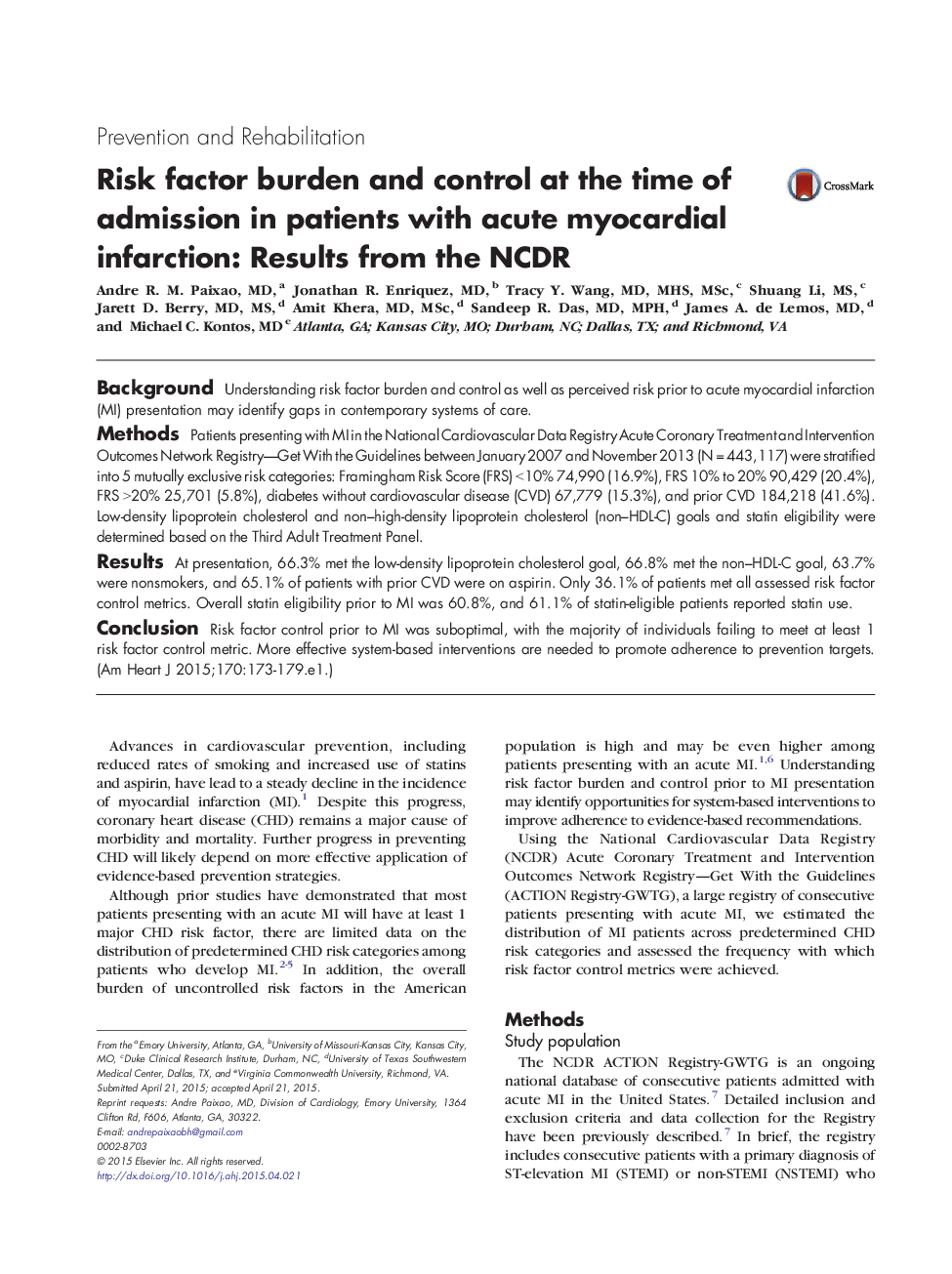| Article ID | Journal | Published Year | Pages | File Type |
|---|---|---|---|---|
| 5928174 | American Heart Journal | 2015 | 8 Pages |
BackgroundUnderstanding risk factor burden and control as well as perceived risk prior to acute myocardial infarction (MI) presentation may identify gaps in contemporary systems of care.MethodsPatients presenting with MI in the National Cardiovascular Data Registry Acute Coronary Treatment and Intervention Outcomes Network Registry-Get With the Guidelines between January 2007 and November 2013 (N = 443,117) were stratified into 5 mutually exclusive risk categories: Framingham Risk Score (FRS) <10% 74,990 (16.9%), FRS 10% to 20% 90,429 (20.4%), FRS >20% 25,701 (5.8%), diabetes without cardiovascular disease (CVD) 67,779 (15.3%), and prior CVD 184,218 (41.6%). Low-density lipoprotein cholesterol and non-high-density lipoprotein cholesterol (non-HDL-C) goals and statin eligibility were determined based on the Third Adult Treatment Panel.ResultsAt presentation, 66.3% met the low-density lipoprotein cholesterol goal, 66.8% met the non-HDL-C goal, 63.7% were nonsmokers, and 65.1% of patients with prior CVD were on aspirin. Only 36.1% of patients met all assessed risk factor control metrics. Overall statin eligibility prior to MI was 60.8%, and 61.1% of statin-eligible patients reported statin use.ConclusionRisk factor control prior to MI was suboptimal, with the majority of individuals failing to meet at least 1 risk factor control metric. More effective system-based interventions are needed to promote adherence to prevention targets.
